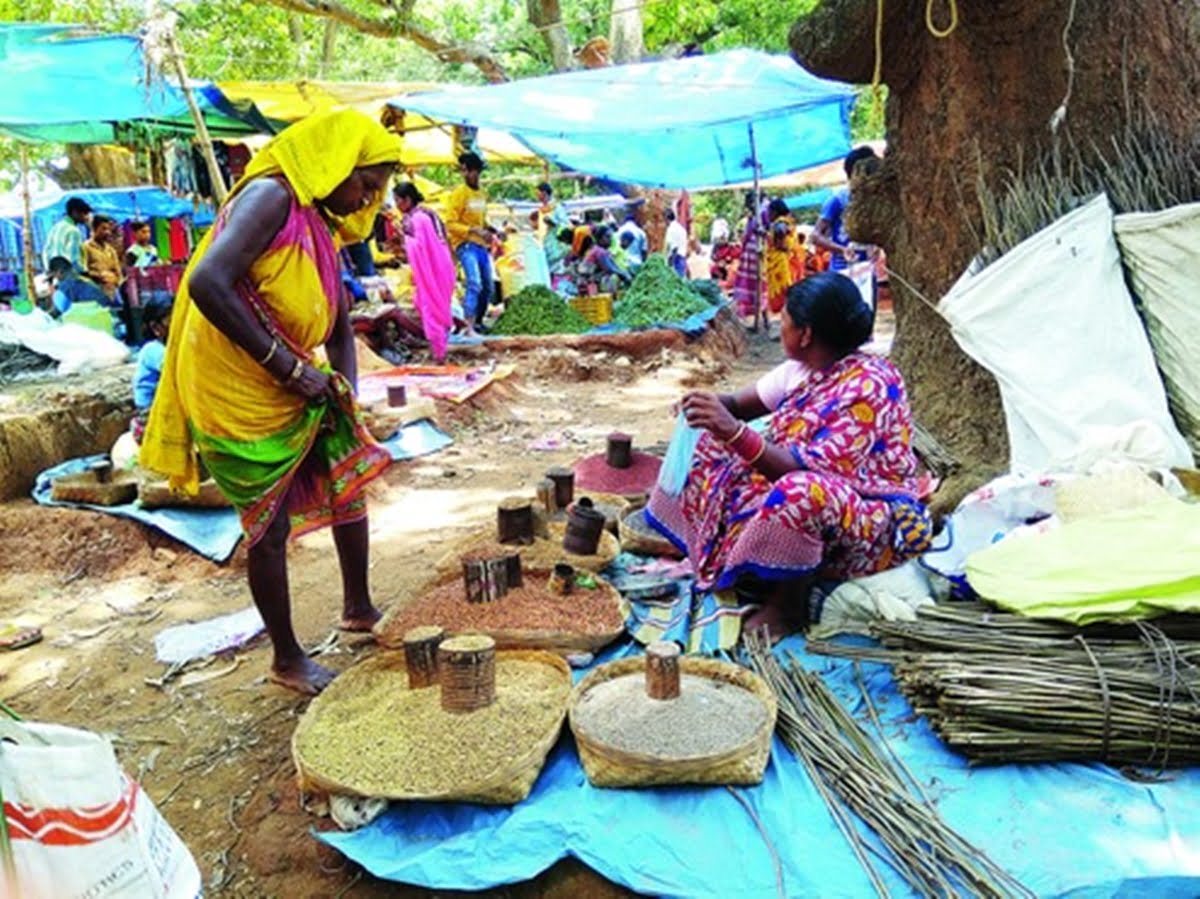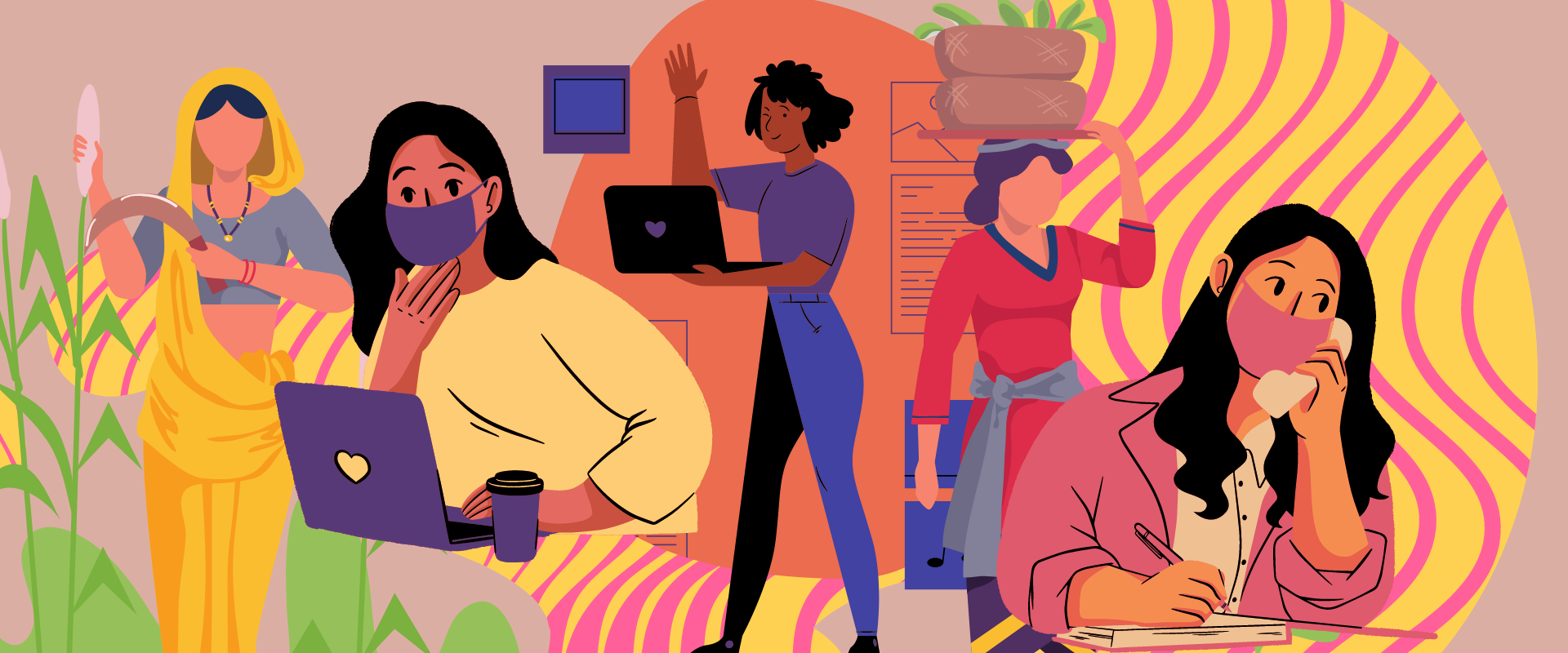One of the primary means of survival for tribal women in Odisha is the daily market. This is a narrative piece on these women, who find themselves often the only breadwinners of the family, struggling to survive in these difficult times of pandemic in a small town located in Semiliguda, Koraput, Odisha.
These women belong to the tribal communities of Odisha such as the Kondhs, Parejas and Gadaba tribes. On a daily basis, they walk long miles and sell their produce, often sourced locally from the forests, to earn their daily wages. Street vending is one of the oldest businesses in India since time immemorial, and among the tribal communities here, this is an important way of sustenance and most importantly, women form the key contributors to the economy through hatta or the local market.
Also read: What Is Keeping India’s Working Women Away From Work?
The International labour Organisation (ILO) estimated that eight out of every 10 enterprises operate informally. The precarious conditions under which they worked during the pandemic made them vulnerable to economic and social shocks.
One of the tribal women I spoke with is a 25-year-old a vegetable seller and is the only earning member in the family. Despite the stringent conditions of the pandemic that could compromise on health, she was compelled to come to the market to sell, because not doing so would mean letting go off the basic necessities of life. During the pandemic, she earned hardly 100 rupees a day, with which she could barely manage to buy provisions. Another woman, married to an alcoholic, with two children, would sell flowers in the daily market. But after the COVID-19 outbreak, people stopped going to temples and conducting temple rituals, because of which her sales hit an abrupt halt.
Coming to the terminologies of street and market vendors, gender incongruities are evidently quite consistent among these, and the pandemic has only magnified it enormously. The uncertainties of the pandemic-induced lockdown left many tribal families poor and unemployed. Additionally, the pandemic’s repercussions have enormously affected their access to essential resources and services.
The uncertainties of the pandemic-induced lockdown left many tribal families poor and unemployed. Additionally, the pandemic’s repercussions have enormously affected their access to essential resources and services.
Situating Street Vendors
According to the Periodic Labour Force Survey (2017-18), India’s employment is largely informal. Out of 461 million employed persons, 415 million were involved in informal jobs. Furthermore, informal employment is a greater source of livelihood for women workers than men in India. Undoubtedly, the street vendors come within the informal masses. As people started frequenting the market lesser due to the pandemic, the women vendors would travel to people’s houses, often walking long miles to sell their vegetables, fruits and other things instead of daily coming to the market. In return, these women workers told me that they were discriminated against by those who’d see them as potential carriers of the virus.
Not surprisingly, the lockdown posed enormous challenges for these women when markets were shut down: Social distancing became a dark reality for these women as distancing is a privilege for the rich but not for the daily vendors as their survival is dependent on the markets.
Vulnerabilities
The lockdown has indeed made the invisibility of these tribal women street vendors quite visible. The pandemic related miseries exacerbated the problems of these women that affected their survival: Being single, aged, critically ill, with alcoholic husbands who would beat them up, having to single-handedly take care of the elder and the infants at home — these women faced many vulnerabilities that they had to undergo during COVID-19.
Despite being spoken to badly, subjected to illicit remarks and many other unruly forms of behaviour, they mostly silently take it and do not react as their primary concern is to make some money for their family.
According to a report by The Hindu, the marginalised sections of the society are more at risk because they cannot follow the norms of social distancing , a lot of them continue to be economically downtrodden and hence can contract virus easily.
Also read: Bitter Reality: Mass Hysterectomy Of Women Workers In Beed’s Sugarcane Fields
Post-Lockdown
Women constitute a large majority in every city but among these communities they are quite significant. There have been various policies programmes implemented from time to time to take into consideration these women, their issues and challenges, but ultimately there are certain social security measures that need to be taken into account which was reflected during this pandemic.
It is the need of the hour that these women street vendors are given vaccines on priority, are made aware of the importance of masks and following community guidelines, effective awareness and sensitisation are some of the measures that need to be taken into consideration. A vital and a thriving economy is the one that takes care of its foot soldiers or those at the very bottom and yet form the most important constituent of the economy.
In India, the Street Vendors Protection of Livelihood and Regulation of Street Vending Act. 2014, acknowledges that 2.5% of the city’s population are street vendors and they should be absorbed into the vending zones.
In India, the Street Vendors Protection of Livelihood and Regulation of Street Vending Act. 2014, acknowledges that 2.5% of the city’s population are street vendors and they should be absorbed into the vending zones. Even after 6 years that the law came into place, it has not been properly implemented and the gap in the responsible implementation of the act is also one of the primary reasons why street vendors today are facing a crisis in the pandemic.
A full-throated campaign is required to eliminate the stigma of Covid-19 towards these street vendors. Relocating these hawkers to sustainable spatial vending zones, livelihood promotion, finance and support for all the street vendors, markets to follow hygiene and sanitation with proper masks, should be made the norm. It is especially important to ensure better facilities for these women and eliminating varied forms of discrimination against them.
Dr. Nupur Pattanaik Teaches Sociology, Department of Sociology, Central University of Odisha, Koraput. She specialises on issues of gender, migration, tribal and labour sociology. She can be found on Instagram and Twitter.
Featured image source: Telegraph India




